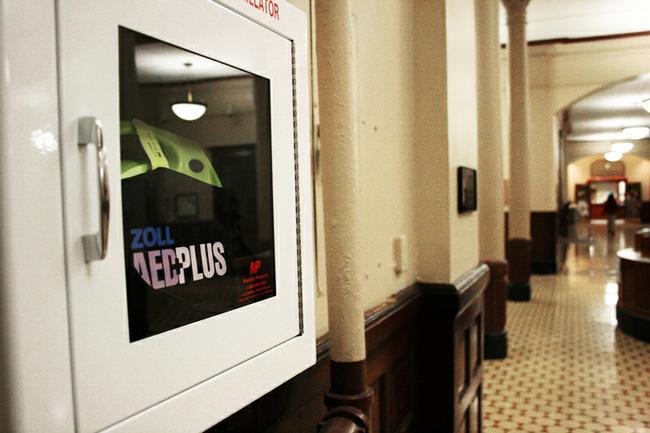The Student Affairs committee within MSA is looking into the possibility of installing Automated External Defibrillators in more residence halls.
AEDs are used to treat life-threatening cardiac arrhythmias of ventricular fibrillation and ventricular tachycardia, also known as sudden cardiac arrest. These devices give simple audio and visual instructions to the person administering the AED so they can use the electrical pads to stop the arrhythmia and allow the heart to establish a regular heartbeat.
There are AEDs in South, Hawthorn, Jones, Responsibility, Schurz, Wolpers and Mark Twain halls. The Schurz Hall AED will move to Lower Bingham Commons next semester, and the Mark Twain Hall AED will move to McDavid Hall when Mark Twain Hall closes. There is also one in the Residential Life Maintenance Center and one in the Defoe-Graham office area.
Director of Residential Life Frankie Minor said the placement of the AEDs was based on student numbers in the residence halls.
“The identification of the halls was based on density of students in the area and the best, centralized location for the group of residence halls that will be accessing the AED,” Minor said.
Student Affairs vice-chairwoman Claire Kates said she has always been concerned that there is not an AED in every building on campus.
“Now, there is one in every complex of buildings, so there is one near each hall,” she said. “However, if a student is in need of an AED and they live in College Avenue, the nearest AED is located in Schurz’s basement. If you are in an emergency situation, every minute counts.”
Kates is spearheading this issue and said the reason the AEDs are so sparse on campus is the cost, care and training that accompanies the medical tool.
MU uses ZOLL AED Plus models, and each one costs approximately $1,200.
“In addition to simply purchasing this device, you need to think about the cost of insurance and maintenance of it as well,” Kates said. “Further, you’ll have to train those who will be using it, namely the staff of each residence hall. All of these costs add up to a substantial sum.”
Most of the AEDs are placed in the basements near the elevators, staff break rooms or laundry rooms to enable 24-hour access, Minor said. The only exceptions are Hawthorn Hall, whose machine is in its lobby, and Schurz Hall, whose machine will soon be in Lower Bingham Commons.
AEDs have also never been used in the residence halls, Minor said.
“The first time we use them, there will be a lot of evaluation going on,” he said. “Did the people know where (the AEDs) were? Did they use them effectively? Was it our staff or was it a total stranger that used it?”
Residential Life plans to buy three more AEDs for university apartments such as Manor House, Tara, University Village and University Heights. Another might go in Mark Twain Hall after its renovation, Minor said. But the organization is in the early stages of planning these additions, so the numbers and locations might change.








